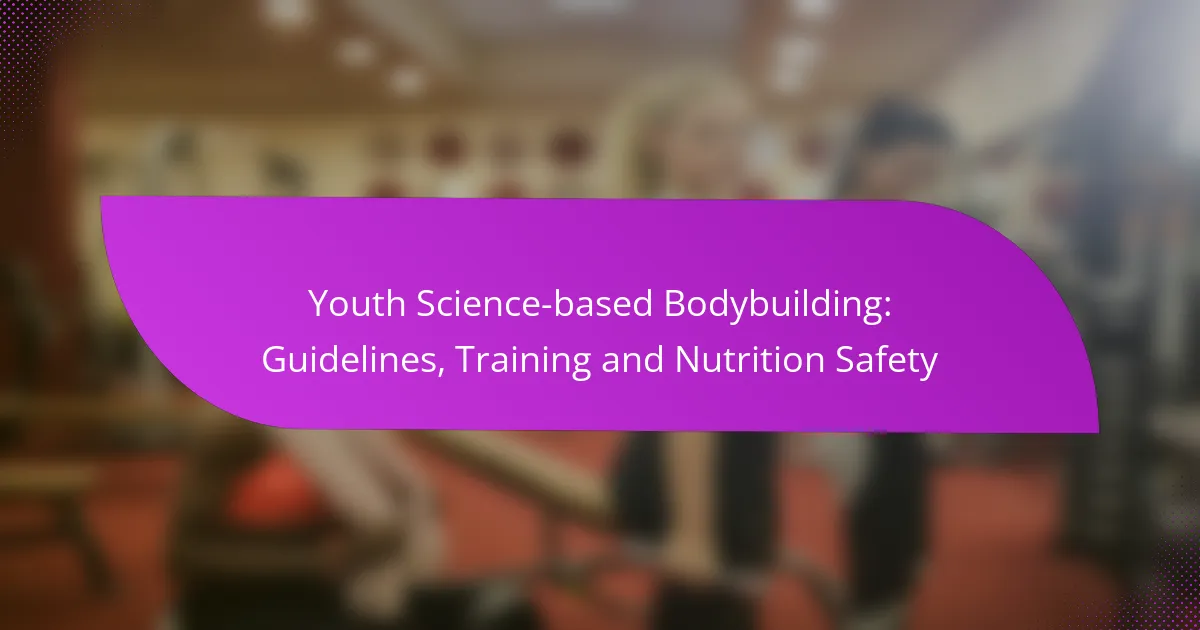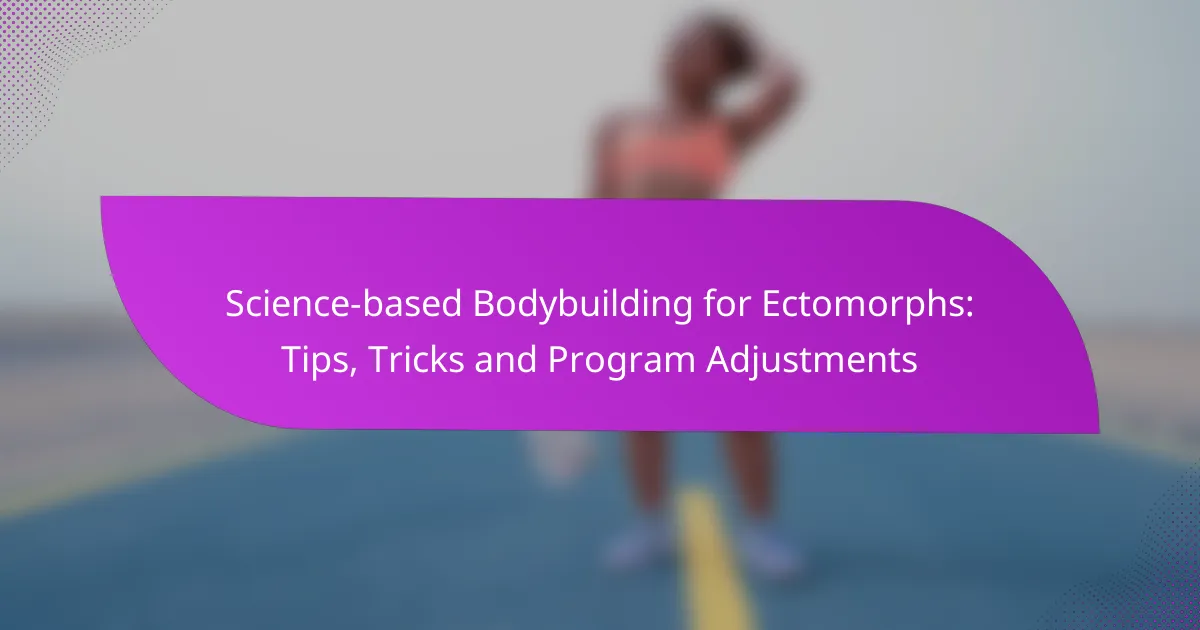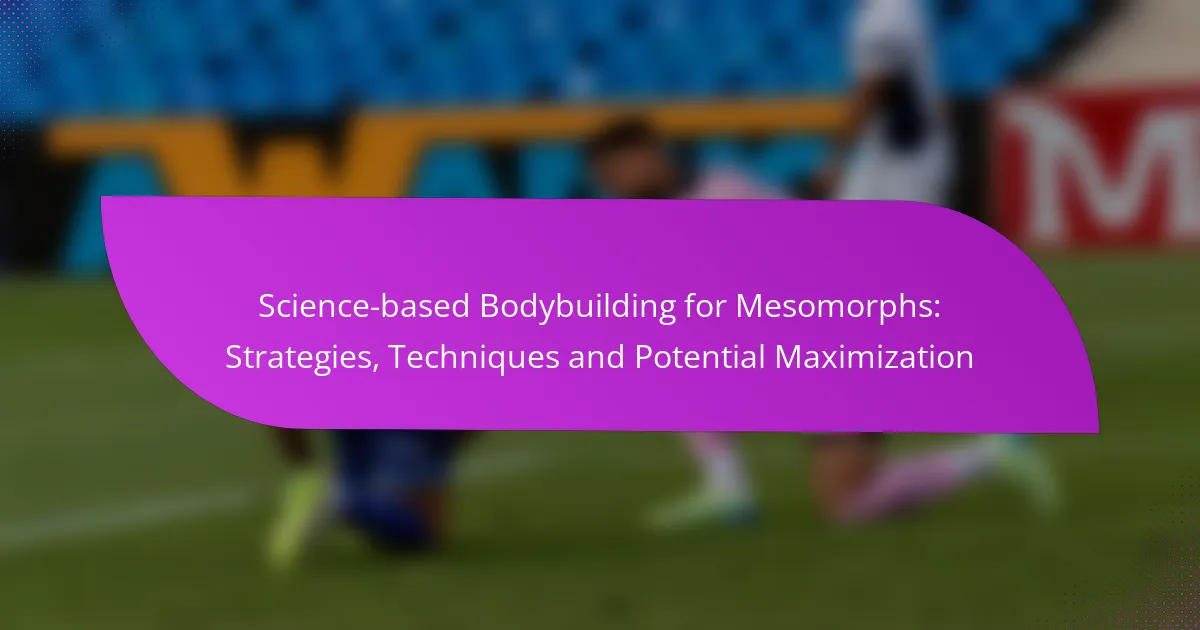Science-based bodybuilding for women emphasizes effective techniques tailored to enhance muscle growth, strength, and overall fitness. By focusing on resistance training and high-intensity workouts, women can achieve optimal results while addressing their unique nutritional needs and considerations, such as hormonal influences and injury risks. Understanding these factors is crucial for developing personalized training and nutrition strategies that promote health and performance.

What Are Effective Bodybuilding Techniques for Women?
Effective bodybuilding techniques for women focus on building muscle, improving strength, and enhancing overall fitness. Key methods include resistance training, high-intensity interval training, and ensuring proper form to maximize results while minimizing injury risk.
Resistance Training
Resistance training is essential for women looking to build muscle and increase strength. This can involve free weights, machines, or bodyweight exercises, typically performed 2-4 times a week. Incorporating a variety of exercises targeting different muscle groups ensures balanced development.
Common resistance training exercises include squats, deadlifts, bench presses, and rows. Aim for 8-12 repetitions per set, adjusting weights to maintain proper form while challenging your muscles.
High-Intensity Interval Training (HIIT)
HIIT is an effective technique for women to improve cardiovascular fitness and burn fat while preserving muscle mass. This involves alternating short bursts of intense exercise with periods of rest or lower-intensity activity, usually lasting 20-30 minutes.
Examples of HIIT workouts include sprinting followed by walking or cycling at a moderate pace. Incorporating HIIT 1-3 times per week can enhance overall fitness and support bodybuilding goals.
Progressive Overload
Progressive overload is the principle of gradually increasing the weight, frequency, or intensity of workouts to continuously challenge the body. This technique is crucial for muscle growth and strength gains in women.
To implement progressive overload, aim to increase weights by small increments (about 5-10%) or add extra repetitions each week. Tracking your workouts can help ensure consistent progress and avoid plateaus.
Compound Exercises
Compound exercises involve multiple muscle groups and joints, making them highly effective for building strength and muscle mass. These exercises are time-efficient and can lead to greater overall gains compared to isolation exercises.
Examples of compound exercises include squats, deadlifts, bench presses, and pull-ups. Incorporating these into your routine 2-3 times per week can significantly enhance your bodybuilding results.
Proper Form and Technique
Maintaining proper form and technique is crucial for preventing injuries and maximizing the effectiveness of workouts. Women should prioritize learning the correct movements before increasing weights or intensity.
Consider working with a trainer or using instructional videos to ensure proper technique. Regularly assess your form, especially as you increase weights, to maintain safety and effectiveness in your bodybuilding journey.

What Are the Nutritional Needs for Women Bodybuilders?
Women bodybuilders have unique nutritional needs that support muscle growth, recovery, and overall health. A balanced diet focusing on macronutrients, adequate caloric intake, and hydration is essential for optimal performance and results.
Macronutrient Ratios
For women bodybuilders, a balanced macronutrient ratio typically includes carbohydrates, proteins, and fats. A common starting point is 40% carbohydrates, 30% protein, and 30% fats, but these ratios can be adjusted based on individual goals and training intensity.
Carbohydrates provide the energy necessary for workouts, while protein is crucial for muscle repair and growth. Healthy fats support hormone production and overall health. Monitoring these ratios can help optimize performance and body composition.
Caloric Surplus for Muscle Gain
To gain muscle, women bodybuilders often need to consume a caloric surplus, meaning they should eat more calories than they burn. A surplus of about 250-500 calories per day is generally effective for muscle gain without excessive fat accumulation.
It’s important to track progress and adjust caloric intake based on changes in weight and performance. Overeating can lead to unwanted fat gain, so focus on nutrient-dense foods to meet caloric needs while supporting muscle growth.
Importance of Protein Intake
Protein intake is vital for muscle repair and growth, especially for women engaged in bodybuilding. Aim for approximately 1.6 to 2.2 grams of protein per kilogram of body weight daily to support muscle synthesis.
Incorporate high-quality protein sources such as lean meats, fish, dairy, legumes, and plant-based proteins. Spreading protein intake throughout the day can enhance muscle recovery and growth, making it beneficial to include protein in every meal and snack.
Hydration Strategies
Staying hydrated is crucial for performance and recovery in bodybuilding. Women should aim for at least 2-3 liters of water per day, adjusting based on activity level and climate conditions.
Consider electrolyte-rich drinks during intense workouts or in hot conditions to replenish lost minerals. Monitoring urine color can be a simple way to assess hydration status; pale yellow indicates adequate hydration, while dark yellow suggests a need for more fluids.

What Unique Considerations Should Women Keep in Mind?
Women should consider several unique factors when engaging in bodybuilding, including hormonal influences, body composition goals, injury risks, and psychological aspects. Understanding these elements can help tailor training and nutrition strategies effectively.
Hormonal Differences
Women experience hormonal fluctuations that can significantly impact their bodybuilding efforts. Estrogen and progesterone levels vary throughout the menstrual cycle, influencing energy levels, recovery, and muscle growth. Training programs may need to be adjusted based on these hormonal phases to optimize performance.
For example, many women find they have more energy and strength during the follicular phase (the first half of the cycle), making it an ideal time for heavier lifting. Conversely, during the luteal phase, they might prefer lighter workouts or focus on endurance.
Body Composition Goals
Women often have different body composition goals compared to men, focusing on fat loss, muscle toning, or maintaining a healthy weight rather than sheer muscle mass. This can influence the types of exercises and nutrition plans they adopt. A balanced approach that emphasizes both strength training and cardiovascular exercise is typically effective.
Setting realistic goals is crucial; many women aim for a body fat percentage in the low to mid-twenties, which can be achieved through a combination of resistance training and a nutrient-dense diet. Regular assessments can help track progress and adjust goals as needed.
Injury Prevention
Injury prevention is vital for women in bodybuilding, as they may be more prone to specific injuries due to anatomical differences. For instance, women often have wider hips, which can affect knee alignment during exercises like squats and lunges. Proper form and technique are essential to minimize injury risk.
Incorporating flexibility and mobility work into training routines can help improve joint stability and reduce the likelihood of injuries. Additionally, using lighter weights and gradually increasing intensity can prevent overuse injuries.
Psychological Factors
Psychological factors play a significant role in women’s bodybuilding journeys. Body image issues and societal pressures can affect motivation and self-esteem. It’s important to cultivate a positive mindset and focus on personal progress rather than comparisons with others.
Setting achievable milestones and celebrating small victories can enhance motivation. Engaging with supportive communities, whether online or in-person, can provide encouragement and help women stay committed to their bodybuilding goals.

How to Choose the Right Bodybuilding Program?
Choosing the right bodybuilding program involves aligning your personal goals, evaluating the program’s flexibility, and considering your experience level. A well-suited program will help you effectively build muscle while accommodating your unique needs and lifestyle.
Assessing Personal Goals
Start by clearly defining your personal goals, whether they include building muscle, increasing strength, or improving overall fitness. Understanding your objectives will guide you in selecting a program that aligns with your aspirations, such as hypertrophy-focused routines for muscle gain or strength training for powerlifting.
Consider the timeline for your goals as well. If you aim for short-term results, you might choose a more intensive program, while long-term goals may benefit from a gradual approach that emphasizes sustainable progress.
Evaluating Program Flexibility
Flexibility in a bodybuilding program is crucial for accommodating changes in your schedule, energy levels, and recovery needs. Look for programs that allow you to adjust workout days, intensity, and volume based on how you feel or other commitments.
Additionally, consider whether the program offers variations in exercises or rep ranges. A flexible program can help prevent plateaus by allowing you to switch up your routine as needed, keeping your workouts engaging and effective.
Considering Experience Level
Your experience level significantly influences the type of bodybuilding program you should choose. Beginners may benefit from foundational programs that focus on basic movements and proper form, while intermediate and advanced lifters might seek more specialized routines that challenge their skills and strength.
It’s also essential to assess your comfort with various exercises. If you’re unfamiliar with certain lifts, a program that includes instructional resources or coaching can enhance your learning and safety. Avoid programs that are too advanced, as they can lead to injury or burnout.

What Are Common Myths About Women in Bodybuilding?
Many misconceptions exist regarding women in bodybuilding, often discouraging them from pursuing strength training. Understanding these myths is crucial for fostering a more inclusive and accurate perspective on women’s fitness.
Myth: Women Will Get Bulky
A prevalent myth is that women will become bulky from weightlifting, which is largely unfounded. Due to lower testosterone levels, women typically develop lean muscle rather than large muscle mass. This means that strength training can enhance muscle tone and definition without leading to excessive bulk.
To achieve a sculpted physique, women should focus on a balanced routine that includes resistance training along with proper nutrition. Incorporating exercises that target all major muscle groups, such as squats, deadlifts, and bench presses, can help build strength and improve overall body composition.
Myth: Cardio Is Enough
Another common belief is that cardio alone suffices for fitness and weight management. While cardiovascular exercise is beneficial for heart health and calorie burning, it does not provide the same muscle-building benefits as resistance training. Women should integrate both cardio and strength training for optimal results.
A well-rounded fitness program might include 150-300 minutes of moderate-intensity cardio per week, complemented by strength training sessions at least twice a week. This combination helps improve metabolism, increases muscle mass, and enhances overall physical performance.



